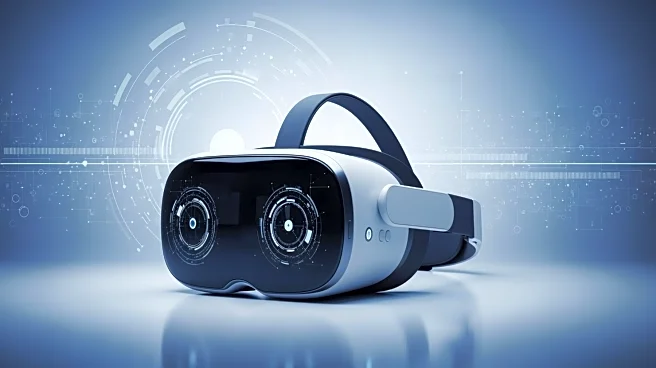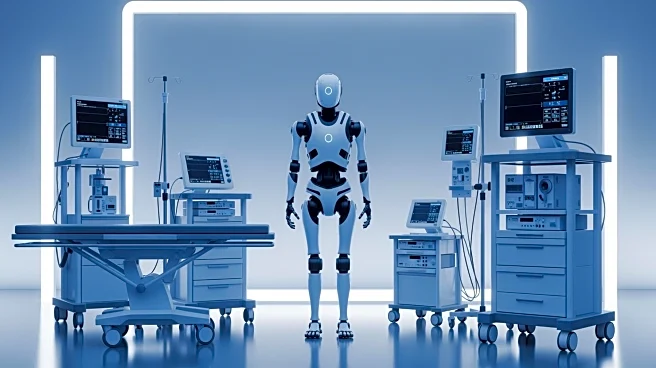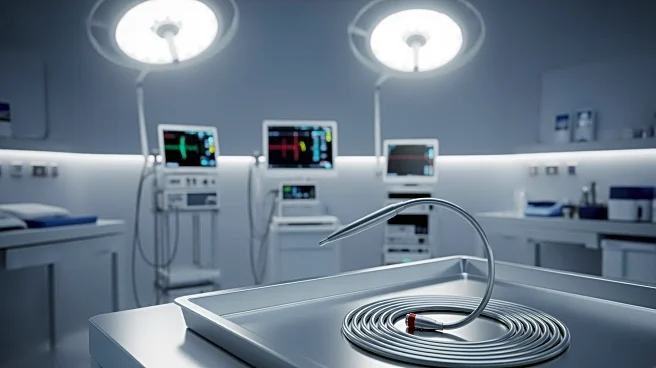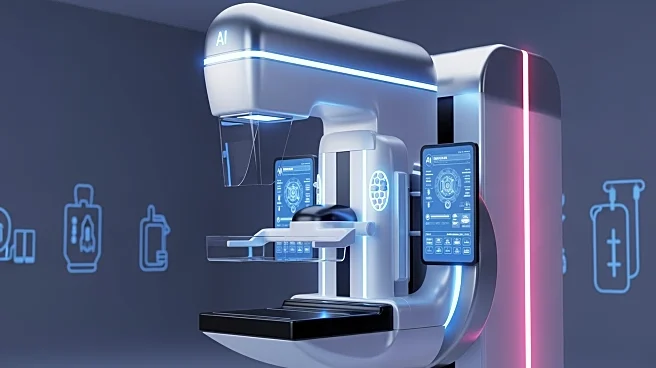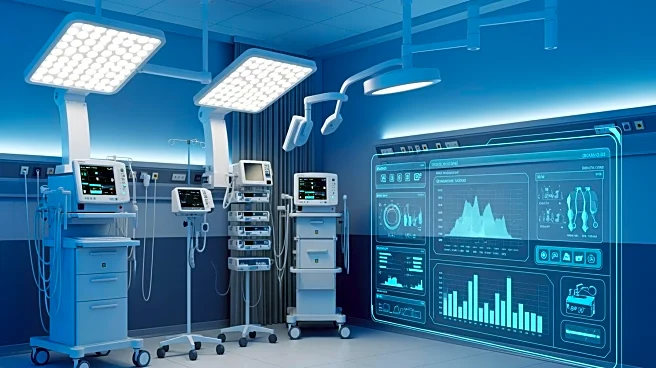What's Happening?
A new portable mixed reality navigation system (PMRN) has been developed to assist neurosurgeons in performing precise surgical procedures. The system integrates Microsoft HoloLens 2 with a laptop and
router to create a local area network for real-time communication and 3D model visualization. The PMRN system uses a surgical probe with high-reflective spheres for dynamic tool tracking, enhancing spatial stability through simultaneous localization and mapping (SLAM) algorithms. Voice commands are introduced to minimize hand movements, maintaining the sterile field during operations. The system has undergone laboratory evaluations using simulated head models and clinical evaluations with neurosurgical patients, demonstrating its feasibility and accuracy in target localization.
Why It's Important?
The PMRN system represents a significant advancement in neurosurgical technology, offering enhanced precision and efficiency in surgical navigation. By reducing the need for physical interaction through voice commands, the system maintains sterility and improves operational workflow. This technology could potentially reduce surgical errors and improve patient outcomes, making it a valuable tool in the medical field. The integration of mixed reality in surgery also opens new possibilities for training and education, allowing surgeons to visualize complex anatomical structures in real-time.
What's Next?
Further clinical trials and evaluations are expected to refine the PMRN system's capabilities and expand its application in various surgical procedures. As the technology gains acceptance, it may lead to broader adoption in hospitals and medical centers, potentially influencing surgical practices and training programs. Continued development could also see enhancements in the system's software and hardware components, improving its usability and accuracy.
Beyond the Headlines
The introduction of mixed reality in neurosurgery raises ethical and legal considerations regarding patient consent and data privacy. As the technology evolves, regulatory frameworks may need to adapt to address these concerns. Additionally, the system's reliance on advanced technology highlights the need for ongoing training and support for medical professionals to ensure effective implementation.
